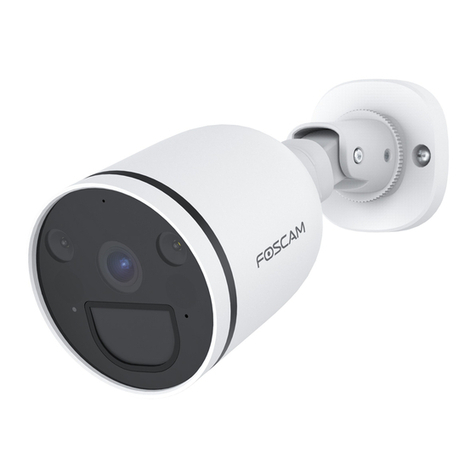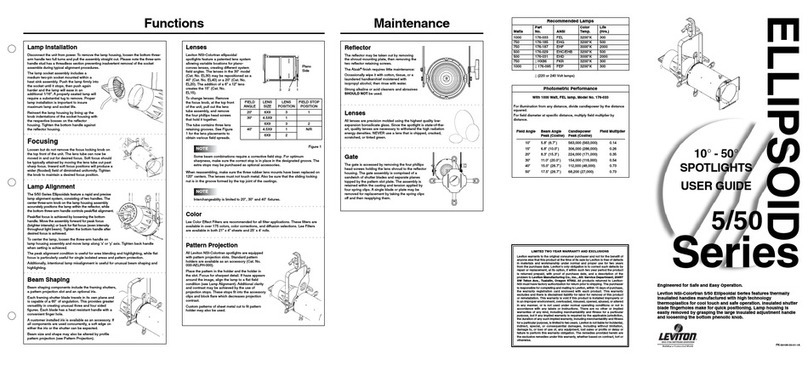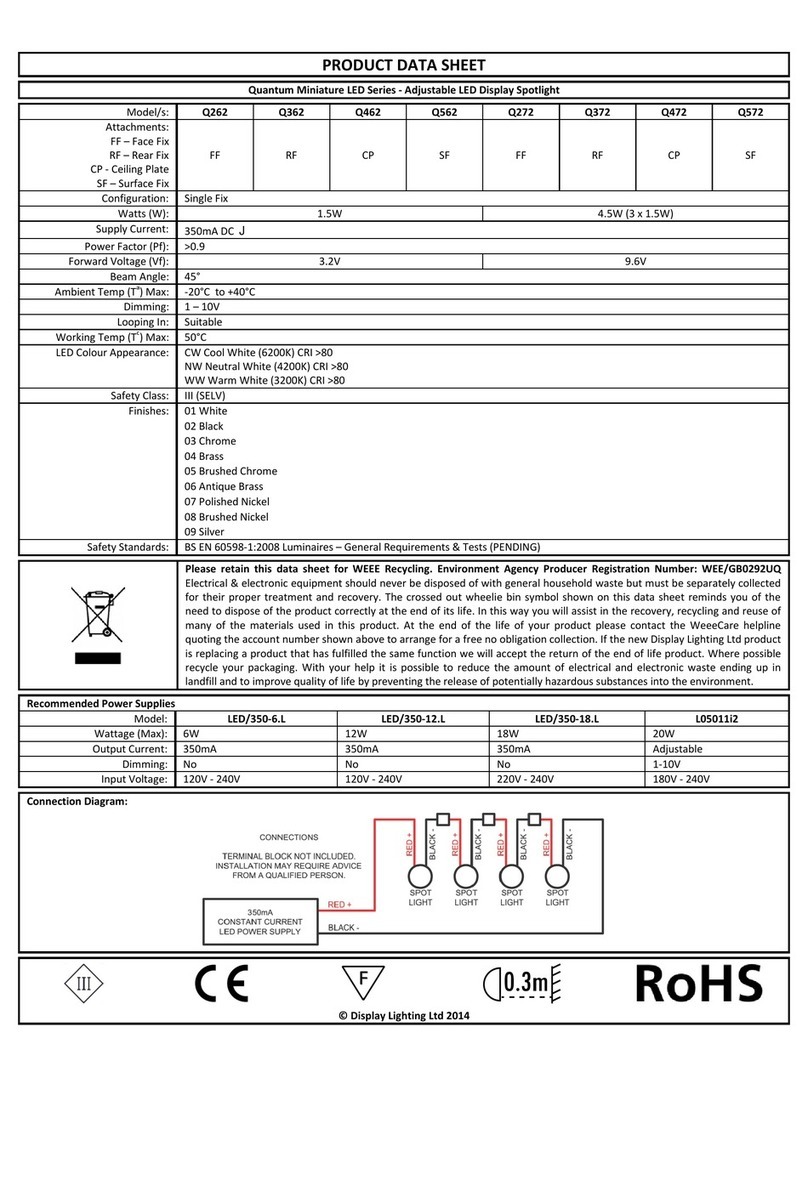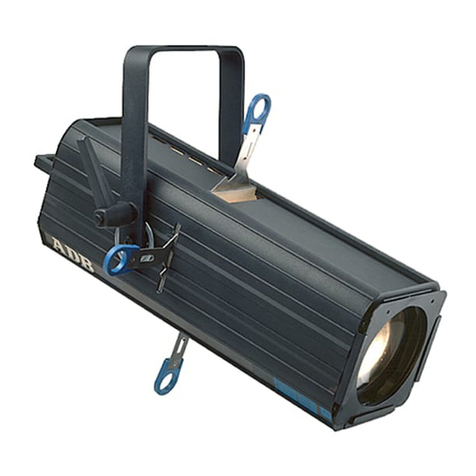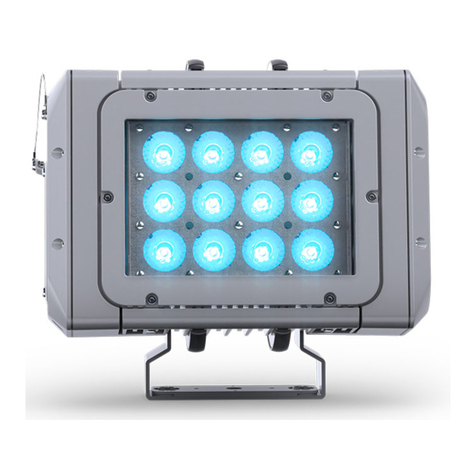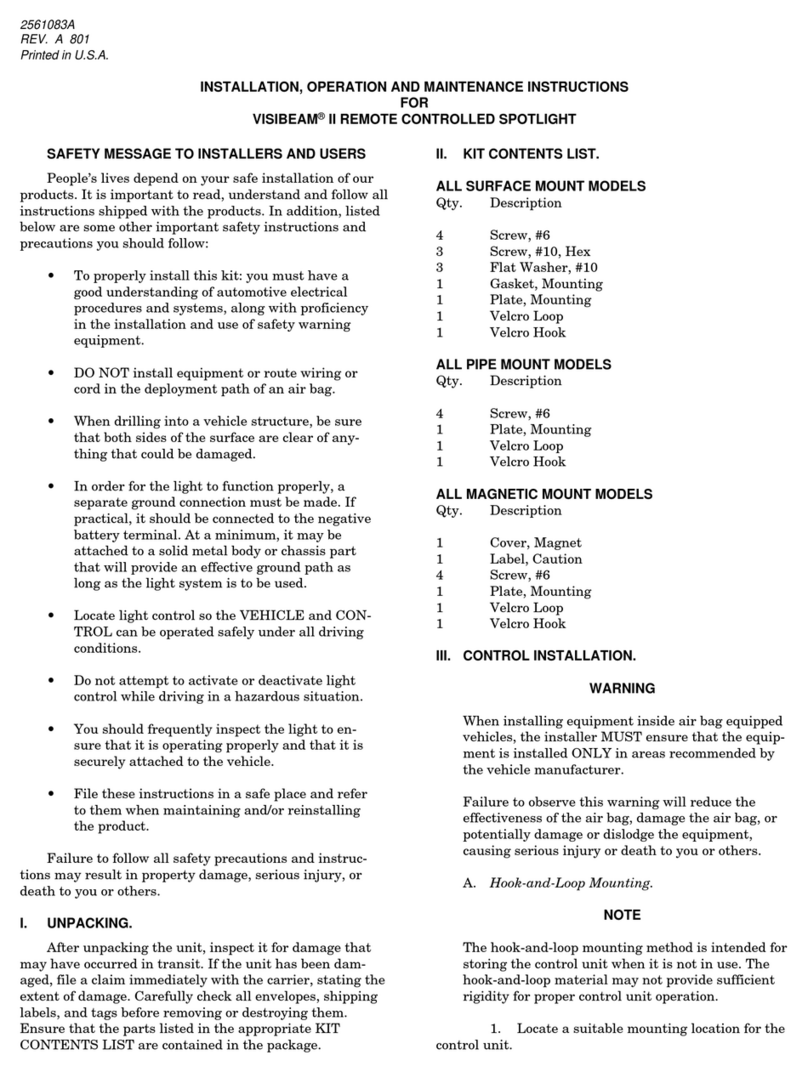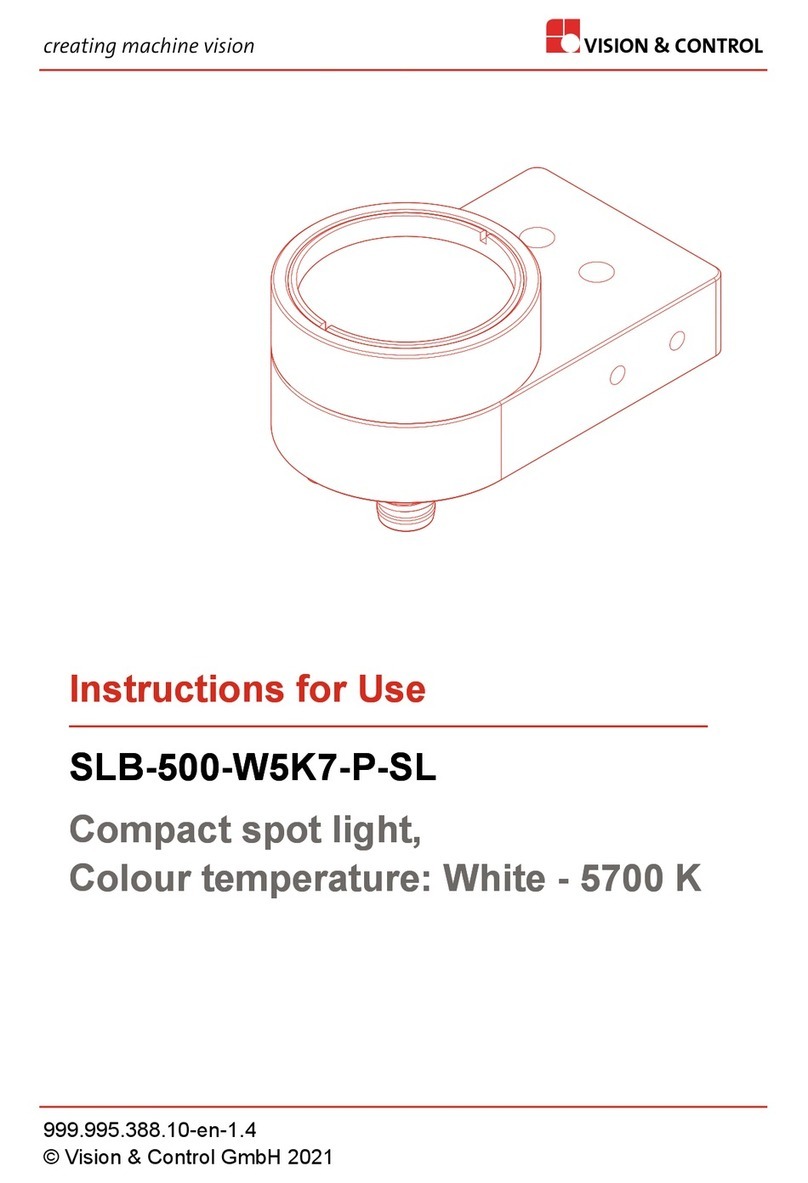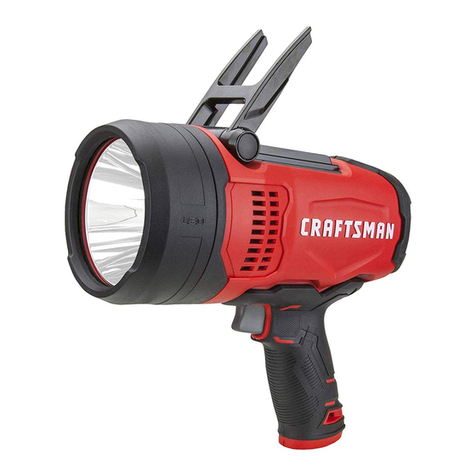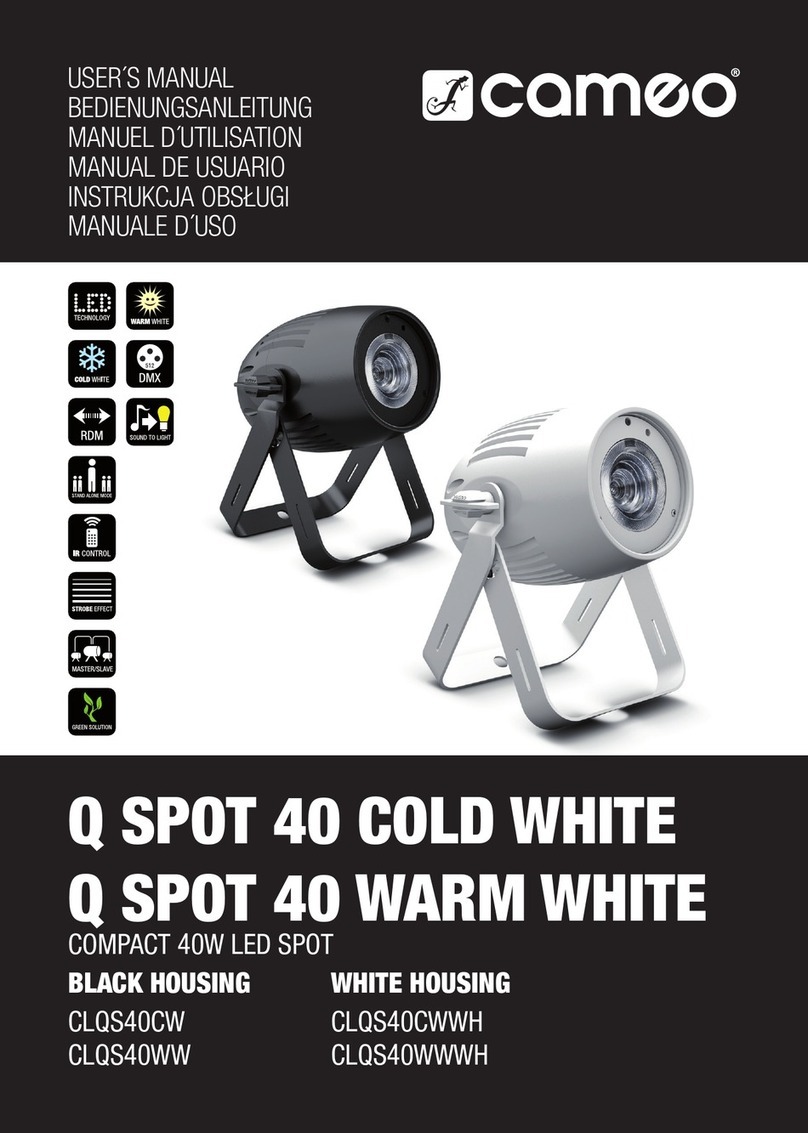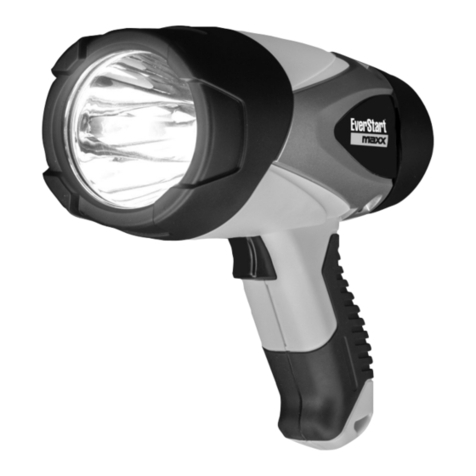
INSTALLATION AND SETTING UP SPOTLIGHT
THE SUPER TROUPER II is shipped in sections which must be assembled. Lifting straps
mounted to the yoke pivot studs (see Figure 6, Item 2) are designed to bear the weight of the spotlight and base.
Thispermitsassemblingthespotlightontheoorandlaterhoistingittoanoverheadspotlightposition.
THE FOLDING BASE ASSEMBLY is shipped collapsed, and requires only folding the base
legs down and pinning the legs using the four T-bolts (Figure 6, Item 17) supplied. Screw the four leveling
feet and locknuts (Figure 6, Item 15) into the brackets at the end of each leg.
WHEN INSTALLED in apermanent location, the leveling feet and casters must be removed,
and the holes in the base leg brackets used for hardware (user-supplied lag screws or bolts) to secure the base
totheoororplatform.Ifitisdesiredtohavetheunitportable,whenoperating,thefourlevelingfeetmust be
adjusted down until the entire weight of the spotlight has been shifted from the casters to the leveling feet.
THE INNER TUBE below the support yoke is drilled with three holes to permit adjusting
the height of the spotlight. The three holes are on four-inch centers and will allow an optical height of ap-
proximately53inches,57inches,and61inchesaboveoorleveltotheopticalcenterofthelamphouseand
lens system. Insert the height location pin through the hole in the outer tube of the base column and one of
the holes in the inner tube. The leveling feet may be adjusted through an additional two-inch range.
THE HORIZONTAL PAN and vertical tilt locking knobs are on the right hand (from rear) side
of the yoke assembly.The yoke saddle is marked to indicate FRONT.Tighten both of these locking devices
securely before attempting to place the spotlight head (lamphouse and lens system) on the support yoke.
PLACE THE LAMPHOUSE and lens system on the yoke assembly,with the normal operator’s
side of the lamphouse (with arc viewing port) to the right side of the yoke saddle, the same as the yoke locking
controls. Line up the four mounting holes in the bottom plate of the support brace with the four slotted holes
inthesaddleoftheyokeassembly.Secureusingthefour5-16/18wingheadscrewsandatwashers.After
mounting the color boomerang (see below), loosen the tilt lock and test the spotlight balance at the desired
projection angle. Loosen the (4) wing head screws and slide the spotlight head forward and back in the slotted
holesintheyokesaddletoachieveoptimiumbalancebeforenallysecuringthewingheadscrews.
MOUNT THE COLOR BOOMERANG to the front of the optical system with the color arms
facing the desired operating side. Remove the (3) screws from the mounting studs on the front of the optical
system housing. Align the three holes in the boomerang housing to the three mounting studs; open the hinged
front cover to access the mounting holes and secure the boomerang to the studs using the (3) screws.
ATTACH THE LAMPHOUSE CABLE CONNECTORS to the mating receptacles on the
lamphouse and power supply.The lamphouse and power supply connectors are keyed for correct pin align-
ment; make certain pins are seated before tightening the locking ring. DO NOT energize the xenon power
supply before the xenon bulb is correctly installed into the lamphouse.
THE SUPER TROUPER II is wired for operation with the “compact” model xenon power
supply Equipment Type 62000xx and the new B3 Syncrolite followspot power supply.If installing the
Super Trouper II with an older model or type xenon power supply, aground wire must be connected to the
power supply’s MS connector Pin M. Operation of the Super Trouper II with axenon power supply other
than a62- or B3 series will void safety listing compliance.
ST2/005
